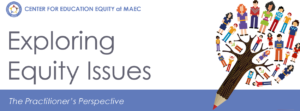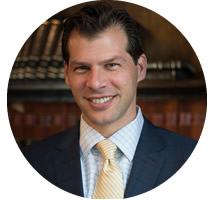The Practitioner’s Perspective: SES Integration


By Terry Hofer
Director, NY School and District Services
WestEd’s Learning Innovations Program
August 2017
When thinking about the challenge of socioeconomic school integration, I am reminded of the Eric Hoffer quote, “The leader has to be practical and a realist, yet must talk the language of the visionary and the idealist.”
The Visionary and the Idealist
A desired future state where schools are comprised of students from all economic backgrounds, races, abilities, gender identities, and cultures is an ideal state worth pursuing. That is why I am engaged in this work. I grew up in a suburban school district outside of Buffalo, New York, where there weren’t more than a few students of color in the entire school. After teaching in a wealthy suburb and serving as a principal in a rural district, I found my way to urban education.
Working primarily in urban education for the past 15 years, I have witnessed the challenges of inequity. Insights gained from my school transformation work and the valued partnerships formed with state, district and school leaders, educators and students, have helped inform a priority project – writing a Playbook for Socioeconomic Integration to advance the dialogue on efforts in this arena.
How could I not be passionate about pursuing this work? The research on the benefits of integrated schools is clear, yet the exemplars of its application are too few in number. There are plenty of advocacy groups citing the benefits, but full-scale efforts to address the challenge are limited due to the political capital that is often spent in working for change. I wish to be counted among the visionaries and idealists working and learning in this space to find ways to create more equitable placements for more students.
The Practical Realist
Richard Kahlenberg of the Century Foundation has been working to document economic integration efforts in the United States for some time. One such effort occurred in my district in Rochester, NY and was featured in Kahlenberg’s 2007 paper, Rescuing Brown v. Board of Education: Profiles of Twelve School Districts Pursuing Socioeconomic School Integration. Although simply one model among many, that experience relied on a controlled choice model designed by Michael Alves and passed 7-0 by the Board of Education. The school district was divided into three zones and families were offered the opportunity to choose schools within their zone – or among city-wide options.
What Have I Learned?
- The vision must be precise and clearly communicated in a way that enables dialogue and opportunity for finding middle ground.
- Fighting for a break from the status quo requires enlisting others in the journey through the efforts of a massive two-way community dialogue.
- Without a fully engaged school or district community, the likelihood that efforts will be successful or sustained is minimal.
- Mobilizing families to take advantage of options under socioeconomic integration efforts requires a creative campaign that educates and empowers. Without a comprehensive and significant investment of time and education, one should not assume that families will fully access options.
- Unintended consequences must be fully explored and mitigated.
What Would I Do Differently?
I would broaden the team of stakeholders and slow down the process. Socioeconomic integration requires countless technical and adaptive decisions. Sufficient time should be granted to fully think through the impact with stakeholders. If the goal is equity, how will equity be defined? And, how many children will have access to an equitable education as a result of the new policies and practices and how will we know? Keeping these questions at the center enables other decisions (i.e. – transportation, professional development, staffing, logistics, etc.) to be contemplated in service to the primary objective for change.
So what does it mean to be practical and a realist, yet talking the language of the visionary and the idealist? In practical terms, schools did not become segregated and inequitable overnight and they will not become desegregated and equitable overnight. In idealist terms, the issue is far too important to give it anything less than our best effort. My best effort includes the application of lessons learned above – and many others that will be detailed in the upcoming Playbook on Socioeconomic Integration.
The Center for Education Equity (CEE) at MAEC is inviting members of our advisory board, partners, and other colleagues to share their views on current equity issues. Their opinions do not necessarily reflect CEE’s views or those of the Department of Education and we do not necessarily endorse any products or resources they promote.

